Novena for the Fallen Through ~ our fourth prayer for our wild kin; psalms for the scapegoats
This is the Wilderness We Choose; Our Lenten Journey, day 26
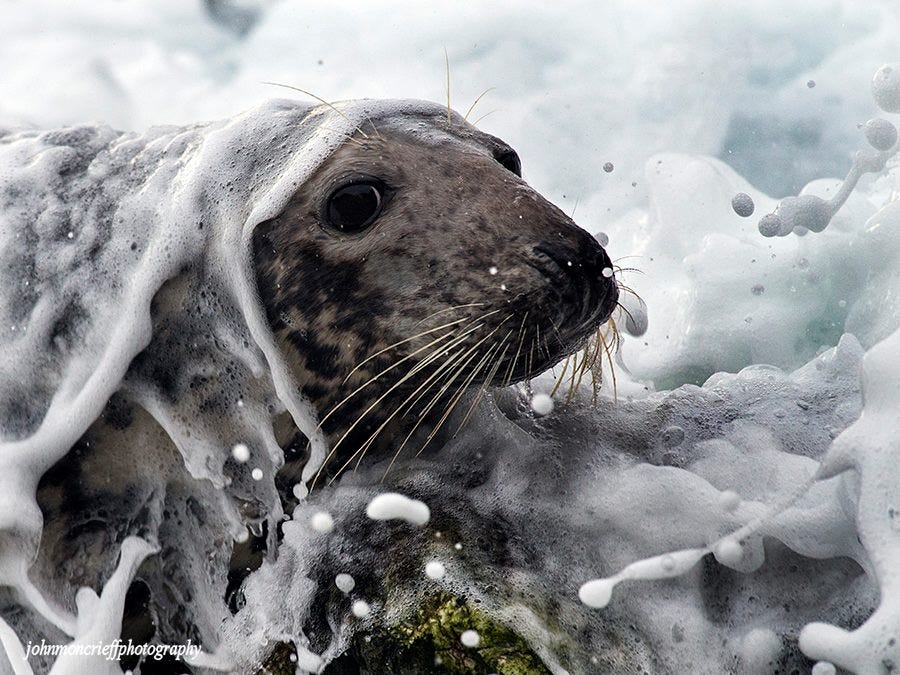
Here is the fourth of our Lenten Novenas for the Fallen Through, which for this month are devoted to Saint Cuthbert and to a call for protection for our wild kinfolk. If you would like to read more about this month’s novena you can read our first prayer here.
We have already lifted prayers for our badgers, our hedgehogs, and for our street trees, who are being unjustly felled in the name of corporate greed and with huge distress to the human and non-human communities around them. Today we turn to the sea, with which Cuddy was in such intimate and prayerful relationship.
When I began this cycle of prayers I thought of seals as one of our wild kin calling to be heard. I had also wanted to include cormorants, as they are so often under threat of culling, and of course now from avian flu. I was walking one day whilst writing the 2017 novena, looked down at the path ahead, and saw a small child’s toy shark lying there. I hadn’t thought of them as a subject for our prayers but, on investigation, found that we have many species of shark in our waters and that 50% of them are under threat. It truly felt that Spirit was speaking by putting this little shark in my way, but more of them tomorrow. It seems that so many of our sea kin are under threat in one way or another, either from pollution and/or through competition with humans for fish. Again, I hadn’t thought of otters as a subject for these particular prayers as I knew that they had made a dramatic return to the British coastline and rivers but, whilst researching seals, I found that, horrifically, there are even calls to cull our newly revitalised otter population. What creatures we are! And now, in 2023, I have found in researching this prayer that it’s not only our birds under threat from avian flu but our mammals, including seals and otters, too!
One of my favourite stories about Cuddy is told in Bede’s ‘Life of St Cuthbert’, which tells us that it was his habit to leave his abbey after dark and walk down to the seashore alone. There, he would wade into the freezing night-black North Sea until it was up to his neck and sing the Psalms until the light of dawn crept into the sky. One night a curious young monk followed him at a discrete distance and saw to his astonishment that, as the tide went out, two otters scampered to Cuddy and warmed and dried his frozen feet with their fur. He was then seen to give them an affectionate blessing before they returned to their holts. The next day the monk confessed to Cuthbert what he had witnessed but promised to keep it a secret until after Cuthbert’s death. St Cuthbert was in such deep communion with the sea and her creatures.
St Cuthbert and the Otters
*
The saint stands immersed in the North Sea,
his nightly vigil, waves lap his beard,
offers prayers of wildness and wakefulness,
the moon is a communion wafer
floating across the sky.
He smiles as curious seals swim past,
when dawn approaches, birds open
their beaks in song, land on his shoulders.
*
Each morning he steps back onto shore
with wrinkled toes, skin pale blue,
two otters scurry over,
warm him with fish-hued breath,
wrap themselves around his frigid feet,
until he can wiggle them again.
*
they beckon him to romp and frolic
and in the midst of this otter-saint
rumble-rumpus, lost in laughter,
he forgets himself, forgets the many
names of God, realises
this too is a kind of prayer.
*
From ‘The Wisdom of Wild Grace’ by Christine Valters-Paintner
Though born inland; on the Scottish borders close to Melrose Abbey, Cuthbert spent much of his life on Lindisfarne, a tidal island off the northeast coast of England, and later lived a contemplative life on Inner Farne, part of a small group of islands a mile or so from the mainland and where he died in 687CE. This is where he introduced, what are believed to be, the world’s first bird conservation laws in order to protect his beloved eider ducks and other nesting seabirds, such as fulmars, shags, oystercatchers, ringed plovers, arctic terns, cormorants, and puffins, several of whom are now under threat but continue to breed there in relative peace. The islands are also home to a significant population of 6,000 grey seals, with several hundred of their pups being born there each year between September and November. Indeed, the Farne Islands have been named one of the best places to see our seal population. The seals are around the Holy Islands all year, but are little seen in the winter. In late February and March they reappear in large numbers. Perhaps Cuddy is still singing the Psalms to call them home.
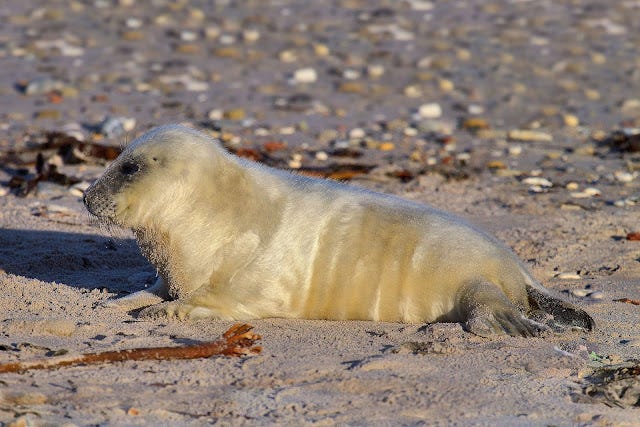
It seems that seals, cormorants, and otters, all familiar to and no doubt loved by Cuthbert, are all under threat because they compete with us for dwindling fishing stocks, whether this is with the powerful fisheries industry, much implicated in polluting our seas, or with hobbyist anglers. I have read of otters described as ‘infesting’ rivers and lakes and of cormorants as the ‘Black Death’. The words we use cast a powerful spell. Seals too have been blamed for decimating salmon stocks with the phrase ‘the only good seal is a dead seal’ often quoted. In the case of all three creatures there have been calls for a cull. Ironically otters, cormorants, and seals are all protected under our wildlife legislation due to persecution leading to a huge decline in their own numbers.
The Eurasian river otter almost disappeared from our waterways in the second half of the 20th century, primarily due to the use of pesticides, but also through habitat loss and both legal and illegal hunting, often with hounds. Following a ban on many of the most harmful pesticides and a subsequent improvement in water quality and food sources, otters have returned to every county in England, having previously disappeared from all of them, other than in the West Country and parts of Northern England (Cuddy’s blessing clearly worked!). This is a huge success story, and something to be much heartened by. However, river otters remain on the IUCN Red List as ‘Near Threatened’. Unbelievably, since as early as 2007, anglers have been calling for a cull of otters, claiming that they are ‘emptying lakes and rivers of fish’ and causing serious financial damage to the fisheries industry. Some claim that the presence of otters is ‘upsetting the balance of nature’, citing the fact that, whilst otters’ staple diet was once eels, the decline in eel numbers has forced them to prey on fish most prized by anglers, such as barbel, carp, trout, and salmon. There has been talk of stock being ‘plundered’ by otters and of fishing clubs having to cut their fees due to lower numbers of fish. The Twitter page ‘Save UK Fisheries’ is also known by the name ‘Otter_Predation’, though I am heartened to see that they haven’t shared anything there since 2018.
Cormorants are a native species first recorded in the UK in the medieval period, with fossil evidence of their presence dating back 500,000 years. I have a great personal fondness for them as I used to love watching them drying their wings on the impossibly high power lines above the river when I lived on a boat. They are such stunning birds, although they have historically been considered both ‘greedy’ and ‘sinister’. In ‘Paradise Lost’, before the Devil appears as a snake in the Garden of Eden, he first takes the form of a cormorant. What a heavy load for any being to carry. Conflicts with the fishing industry mean that cormorants have a long history of persecution, dating back even into Tudor times. In the early years of the 20th century this persecution increased, leading to a significant decline in their numbers and their subsequent protection under the Wildlife and Countryside Act 1981. Since that time their numbers have increased, although as recently as 2007 their conservation status was listed as ‘Amber’ by the British Trust for Ornithology. Even before this anglers were petitioning the Government to licence a cull, one newspaper article describing the birds as ‘killing machines’. Again, cormorants have also been forced further inland than they might otherwise go by dwindling food sources in the sea. Some have even claimed that the birds might lead to the extinction of Atlantic Salmon in our waters, ignoring the fact that overfishing, interbreeding with escapees from salmon farms, and water pollution, all caused by humans, are much more likely to do that. In 2010, 2000 cormorants were killed in the UK under special licence. Jason Endfield in his piece, ‘The Cormorant Killers’ wrote in May 2022, that licences had been issued to cull more than 11,000 cormorants in the previous five years, although the number may be many more than that as there is much evidence that even those issued with licences are illegally killing far more birds than they have been given permission for. Methods used include shooting and ‘egg smothering’, where eggs are soaked with corn oil which starve the growing embryos of oxygen. The parent birds continue to incubate the eggs which never hatch.
The British Isles is home to internationally important communities of both grey and common seals. They are part of our mythology through the many stories of the selkie people that whisper on the wild edges of our coastline and are much loved. In the UK the grey seal, our largest living carnivore, was almost hunted to extinction by the end of the 19th century, with ‘white coats’, young seals only a few weeks old, being commercially hunted into the 1960s, this despite the fact that grey seals were the first mammals to be protected by modern legislation in the Grey Seals Protection Act of 1914. The Conservation of Seals Act (1970) now protects them during a closed season from 1st September to 31st December. The population of common seals is only 350,000 to 500,000 worldwide, the British Isles supporting 40% of the European subspecies of common seal, around 5% of the world population overall. However, their numbers are in significant decline.
Despite all of this, seals have been scapegoated for the decline in the prosperity of fisheries and are considered a ‘menace’ by many salmon anglers. Seals are opportunistic feeders but generally will not take the same fish that commercial anglers are seeking. They much prefer sand eels if they are available. The tragedy of course is that they aren’t as their numbers have also hugely declined, which has in turn also adversely affected our puffin population. In recent studies it has been found that only 1% of seals will take fish from fisheries. Nevertheless, in 2013 the Seal Protection Action Group and others condemned the shooting of 884 seals, both common and grey, over two years under licences granted by Marine Scotland. These licences were granted to salmon aquaculture, wild salmon netting companies, and sports fishing interests despite there being ways of deterring seals without harm.
In the cases of otters, cormorants, and seals, many would rather spend money on killing, and persist in scapegoating, than change their environmentally damaging practices which might replenish fish stocks and provide an abundance of sustenance for all beings. I see that badgers, otters, cormorants, seals, and many others are all forced to wear their ‘crown of thorns’. Cuthbert must be weeping sea-salt tears at what we’ve done.
And now, there is yet another threat; that of avian, or bird, flu. This is a virus that is present in many strains, most of which cause no or few symptoms in wild birds. The current outbreak however is of Highly Pathogenic Avian Influenza (HPAI) which has a high mortality rate. This outbreak is unprecedented and is the largest ever in the UK, and worldwide. It has affected seabirds, such as the cormorant, disproportionately. Most affected are Great Skuas and Northern Gannets, with 11% of the UK population of Great Skuas having died. The full impact on our seabirds won’t be known until numbers are counted during 2023. To date, 208 million birds have died worldwide. It was reported a week ago that five dead seals found on a beach in Cornwall had been suffering from bird flu. In the first three months of 2023, avian flu has also been found in our otters, foxes, mink, and dolphins.
I am conscious as I write about all of this that it might feel overwhelming and disheartening to read but I continue to trust the power of knowing over ignorance, of joining together in prayer and solidarity with all beings over disconnection and disengagement, and of staying alive to feeling over turning away and becoming numb. If anything, researching the plight of our wild family has only made them more precious to me and has increased my empathy for their plight. It has certainly opened my heart. I hope that it will be so for us all and that our other-than-human kin will feel the threads that we have woven, that we will become part of their own prayer. In the end, I hope that we will come to see that there is nothing that is being done to them in the name of greed, money, and power that is not also being done to us. Then, finding no more separation but only beautiful difference, we will truly stand in solidarity with our wild kin.
Novena for the Fallen Through
Protection, justice, and shining health for our wild kin.
This prayer is for the people of sea, river, lake, sky, and shore; otter, cormorant, and seal.
Blessed Cuthbert,
Beloved Cuddy,
Saint of Salt and Fire,
Antlered ancestor,
Friend of otter, eider, cormorant, and crow,
Walker of the untamed edge of Land and Spirit,
Lover of wild places, wild creatures, and wild grace,
Threader of sea-stars into wild prayer.
We stand in solidarity with you at the roots of the Tree of Life.
We lift a prayer of gratitude and protection for the otter people,
your beloved companions and friends,
warmers of your cold feet and every cold heart,
joy-bringers, heart-singers,
river-gliders, shape-changers,
water-miners and diviners,
showing us that we have done good,
that we are able to make changes that return brimming life
where there was only silence, sickness, and sorrow.
We rejoice at their return,
at the splash and ripple of their swift diving,
are heartened by their prayer,
and we make our own prayer for their safety,
now and on and on,
for as long as this sweet river that we all swim in flows.
We ask for the return of eel and elver,
pearl-bellied pilgrims,
following moonlit paths of exile and return,
once a staple of poor and otter,
let our rivers teem and slick~shine with the eel-kins’
passing once more.
Blessed Cuthbert,
Beloved Cuddy,
Saint of Salt and Fire,
Antlered ancestor,
Friend of otter, eider, cormorant, and crow,
Walker of the untamed edge of Land and Spirit,
Lover of wild places, wild creatures, and wild grace,
Threader of sea-stars into wild prayer.
We stand in solidarity with you at the roots of the Tree of Life.
We lift a prayer of gratitude and protection for the cormorant people,
vulnerable to our fear of the dark and our own greed,
wings spread wide, beating heart laid bare to blame,
cast out, crucified, sacrificed to shame.
Sea born Sea-Raven, salt bright.
Thank you for holding the parts of us that we can’t,
for holding up a dark-winged mirror to our denial.
We pray that this burden be lifted from you,
that your chicks will thrive, emerald-eyed,
and that your belly might be filled with food freely given
by the Mother of us all.
We ask for the return of health to our waters,
wild children of the Silver Salmon Mother seeking Source,
salt and sweet, fish brimming,
overflowing with diversity of life,
not valued for what we can take,
the money we can make,
but for itself as the womb from which we all were born.
Blessed Cuthbert,
Beloved Cuddy,
Saint of Salt and Fire,
Antlered ancestor,
Friend of otter, eider, cormorant, and crow,
Walker of the untamed edge of Land and Spirit,
Lover of wild places, wild creatures, and wild grace,
Threader of sea-stars into wild prayer.
We stand in solidarity with you at the roots of the Tree of Life.
We lift a prayer of gratitude and protection for the seal people,
velvet-soft, selkie-swimming, singing sorrow-songs
for babies lost to sickness, storm, and sea,
we stand in solidarity with grieving mothers, orphaned pups,
and join the sorrow-songs for all we’ve done to bring the storm clouds in.
We honour the stories of seals that teach us
that we too must dive into a wilder sea,
renew our skins, cracked from too long on dry land,
in the desert of this world that we have made
whilst longing for the water, the spirit sea.
Thank you, beloved seal people,
for holding our own stories of exile and return.
There is so much for us to return to,
how far we have come from the deep and holy darkness of your eyes.
We ask for safe birthing grounds for our seal kin,
for gentle labour and flowing milk,
for sweet seas and healing rains,
for plentiful food and winter sunlight,
for healthy pups bright and bold with life.
And may we become bright and bold with life in our turn.
We ask this in the name of badger and water vole,
hen harrier and natterjack toad,
red fox and red deer,
dotterel and dormouse,
red squirrel and seal.
Of starling and sparrow,
sand lizard and slow worm,
hedgehog and hare,
corn marigold and marsh cleaver.
Of great crested newt and small fleabane,
ringed plover and oystercatcher,
pasque flower and mountain ringlet butterfly,
wildcat and skylark.
Of marsh fritillary butterfly and shrill carder bee,
blue ground beetle and white-clawed crayfish,
freshwater pearl mussel, cormorant, and crow.
Blessed Cuthbert,
Beloved Cuddy,
Saint of Salt and Fire,
Antlered ancestor,
Friend of otter, eider, cormorant, and crow,
Walker of the untamed edge of Land and Spirit,
Lover of wild places, wild creatures, and wild grace,
Threader of sea-stars into wild prayer.
We stand in solidarity with you at the roots of the Tree of Life.
May all beings of the sea that you so loved,
where you sang Pslam songs to time and tide,
be bountifully blessed with wild health, forced no more to carry blame.
We know too well the heavy load that the
poor of power are forced to carry
by those with poverty of spirit.
May all beings be free of such tyranny
to become truly wild kin, family.
The first is for badger.
The second is for hedgehog.
The third is for our street trees.
The fourth is for otter, cormorant, and seal,
for salmon, and elver, and eel.
May our string of prayer beads,
formed in the starry sea where all things are one,
gathered on the shore of meeting,
be filled with life, love, and wild justice
for all beings on this earth we share.
For this we pray.
Aho mitake oyasin, amen, blessed be. Insh’allah. Om shanti. For all our relations.
Information and References:
Linking should not be taken as an endorsement of the views expressed!
On otters ~
http://www.telegraph.co.uk/news/earth/earthcomment/charlesclover/3497294/Otters-visit-to-Farne-Island-is-no-surprise.html
https://en.wikipedia.org/wiki/Eurasian_otter
http://news.bbc.co.uk/earth/hi/earth_news/newsid_9066000/9066425.stm
https://www.theguardian.com/environment/2011/aug/18/otters-return-british-rivers
http://www.anglersmail.co.uk/news/rush-save-fisheries-otters-72438
http://www.thepredationactiongroup.co.uk/index.html
https://twitter.com/Otter_Predation
https://www.carp.com/topic/1279-otters/
On cormorants ~
https://en.wikipedia.org/wiki/Cormorant
http://www.birdlife.org/asia/news/eyes-cormorant
https://en.wikipedia.org/wiki/Cormorant_culling
http://www.bbc.co.uk/news/uk-wales-41803212
https://www.theguardian.com/environment/2012/aug/11/anglers-cormorants-cull
http://www.bruno-broughton.co.uk/pdf/Protecting%20Your%20Fishery.pdf
http://www.wildlifetrusts.org/node/18722
https://blx1.bto.org/birdfacts/results/bob720.htm
On seals~
https://www.lrb.co.uk/v30/n16/robin-robertson/at-roane-head
http://www.snh.org.uk/publications/on-line/naturallyscottish/seals/identification.asp
https://www.underwatertimes.com/news.php?article_id=10861275940
http://www.dailyrecord.co.uk/news/scottish-news/campaigners-urge-government-step-action-1766398
Grey seals:
https://en.wikipedia.org/wiki/Grey_seal
Common seals:
https://en.wikipedia.org/wiki/Harbor_seal
On eels ~
https://www.theguardian.com/environment/2010/oct/27/the-decline-of-the-eel
https://travelingpoet.net/2014/03/06/an-eel-by-ted-hughes/
On salmon ~
https://en.wikipedia.org/wiki/Atlantic_salmon
https://www.fishandfly.com/the-uk-atlantic-salmon-conservation-charities-who-is-doing-what/
http://www.atlanticsalmontrust.org/
https://www.theguardian.com/environment/2011/jun/26/salmon-numbers-leap
On the fishing industry~
http://www.heraldscotland.com/news/15641686.___Cover_up____claim_over_ban_on_fish_farm_pesticide/
http://www.sealscotland.com/environmental-costs-of-producing-farmed-salmon/



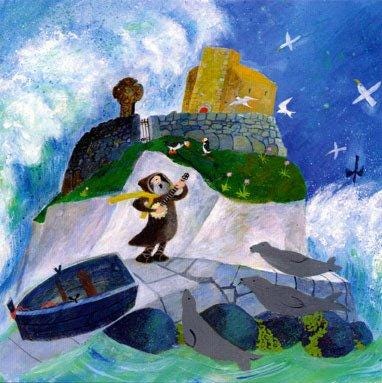
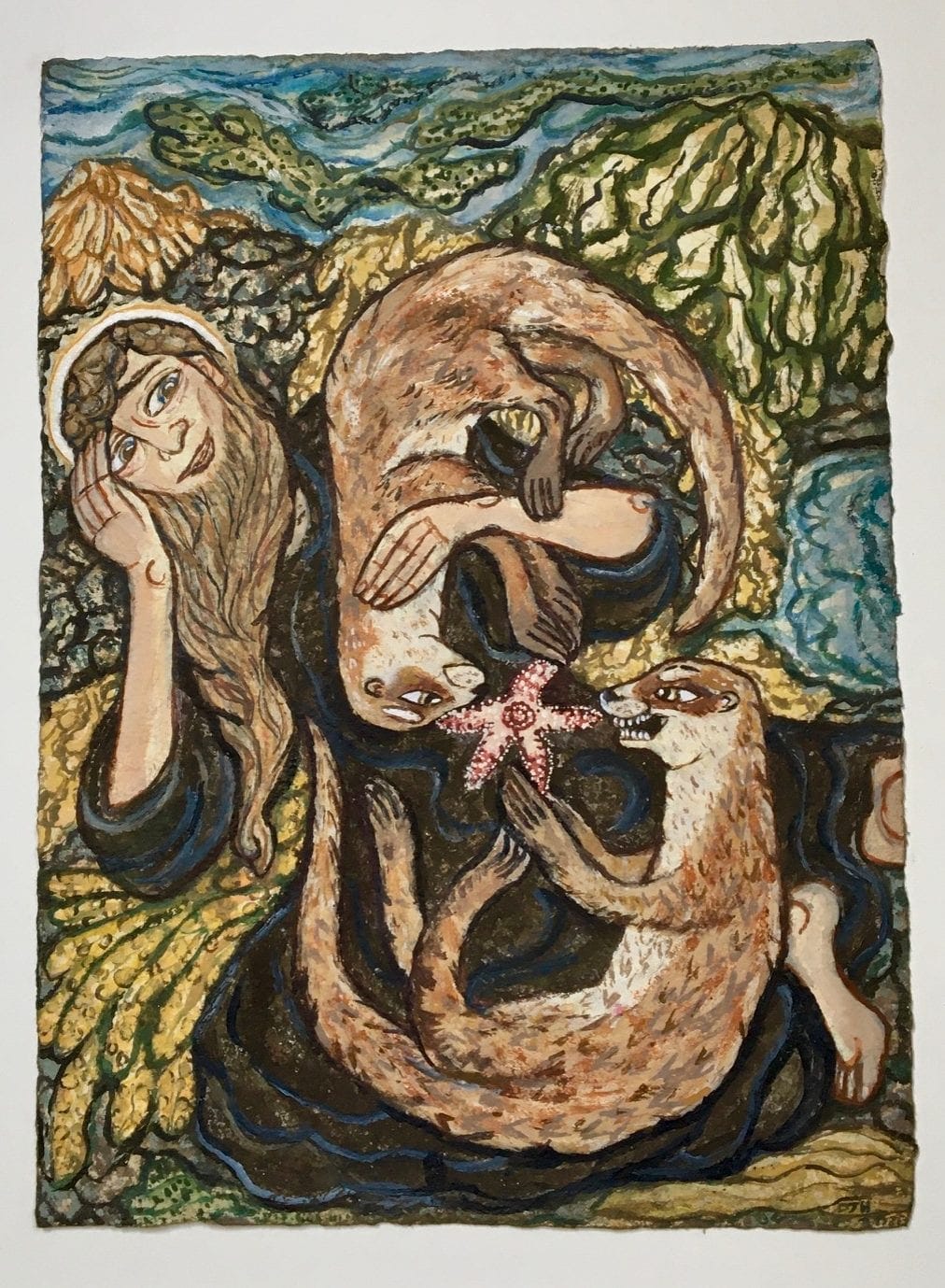
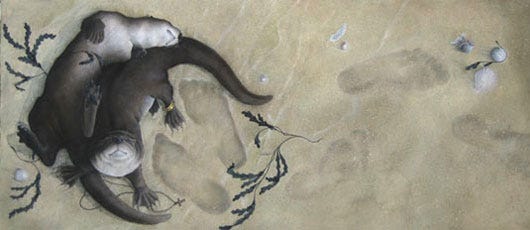

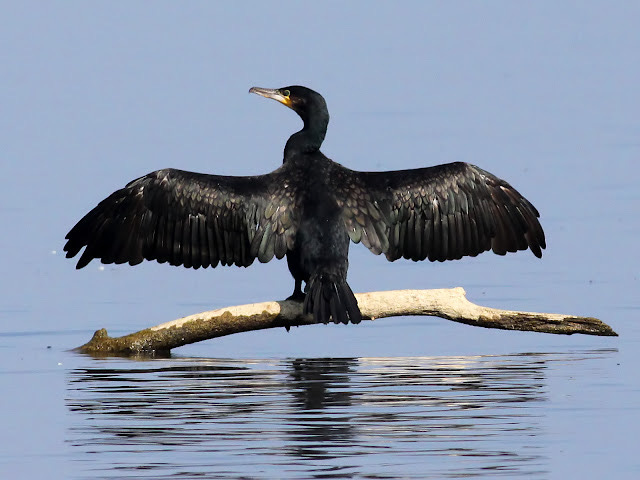

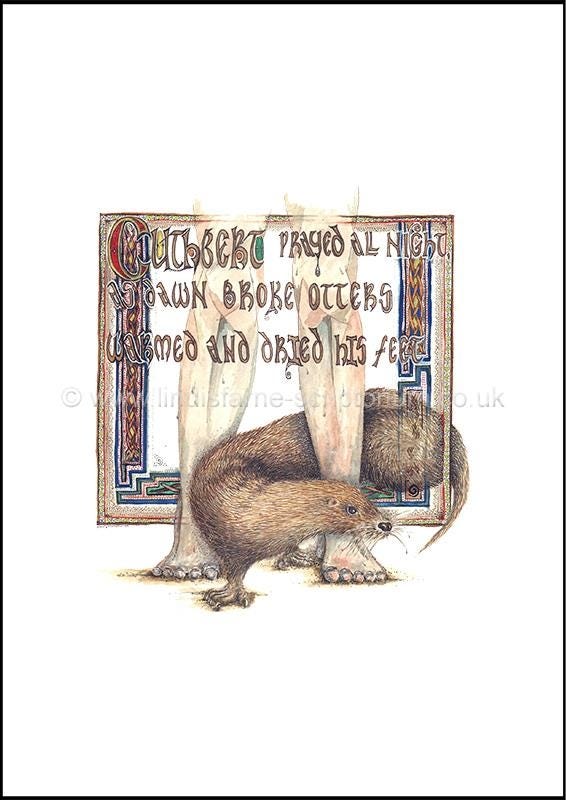

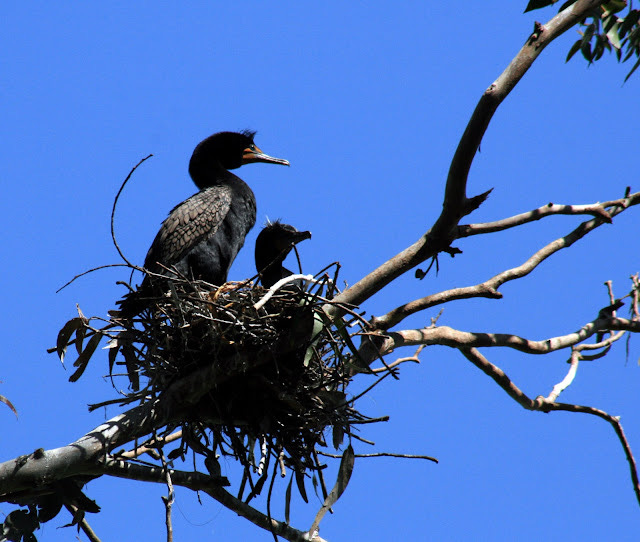

Another eye opener but as you said so very well, eyes open is so much better than eyes closed. Here’s to the wild ones x
~” In the end, I hope that we will come to see that there is nothing that is being done to them in the name of greed, money, and power that is not also being done to us. Then, finding no more separation but only beautiful difference, we will truly stand in solidarity with our wild kin.”
Thank you for sharing these beautiful prayers Cuddy and Cedd are favourites of mine having lived for many years in Northumberland and now by an Essex Estuary. These words So clearly describe what is in my heart the reality that there is no separation. Some days my heart is heavy and raw with the damage the lack of respect, the barbaric destruction the human species commits; this morning a gift from the Estuary of oyster shells freshly cleaned by probing beaks and your words rekindled the flame of hope🙏 🧡💜🧡🌀blessings from my hearth to yours 🌀🧡💜🧡